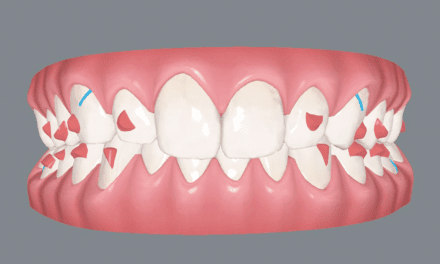
You Get What You Pay For
Joseph Ross, vice president of Ross Orthodontic
Midlothian, Tex
Allied Member ASID
When purchasing a new delivery system, keep in mind that you get what you pay for. Expect to pay a little more for quality. Cabinet-grade plywood, wood drawers, full-extension ball bearing drawer slides, and high-pressure laminates are signs of a quality delivery system. Particleboard or medium-density fiberboard, epoxy-coated drawer slides, plastic drawers, and metal doors or drawers cheapen the look and quality of the system.

Double Tiebacks
John Gerling, DDS, MS
McAllen, Tex
If you ever use wire tiebacks with your orthodontic wires, here’s a tip that can save you and your patients some time. If you have a single wire tieback and it breaks, you may have a space or two open somewhere. You then have to spend one or two appointments reclosing the space. All you have to do to prevent this is to use two wire ties for the same tieback. You just use two ligature ties held together while doing the tieback.
For some reason they won’t break!

Two Tight Squeezes
Amy Counts, DDS
Jacksonville, Fla
I teach at the orthodontic program at Jacksonville University, and these are two problems the students encounter.
- When placing a larger rectangular wire in the 6 tube, use the Weingard with the instrument oriented along the plane of occlusion (as it is normally used) and push the wire medially first, and then wiggle it a little bit to get it to pass through the tube. The arch shape of most larger wires tends to curve inward too soon in front of the 6 tube, and the medial push tends to straighten it out slightly so that it can enter the tube more easily. Also, if the torque of the new wire is greater than the existing wire, the “wiggle” will temporarily make the torque the same so that the wire can pass through the tube.
- When patients have swollen tissue and you are trying to tie a wire in with an rubber ligature, if you use a sharp instrument to help direct it over all four of the wings, it often pokes the patient, who already has a sore spot there. Start the ligature on the mesial-gingival wing first, then pull down to the occlusal wing, then back up the gingival wing (this wing is the one near the tissue that gets poked with the sharp instrument). Take your fingers on the hemostat and “overtwist” the ligature two full turns to the right. This pulls the rubber ligature tight, thus making it thinner so that it slips easily under the wing. You can use this anywhere that you have a tough tying situation. If you are left-handed, follow the directions in the opposite way.
|
Do you have a pearl to share with your colleagues? |




